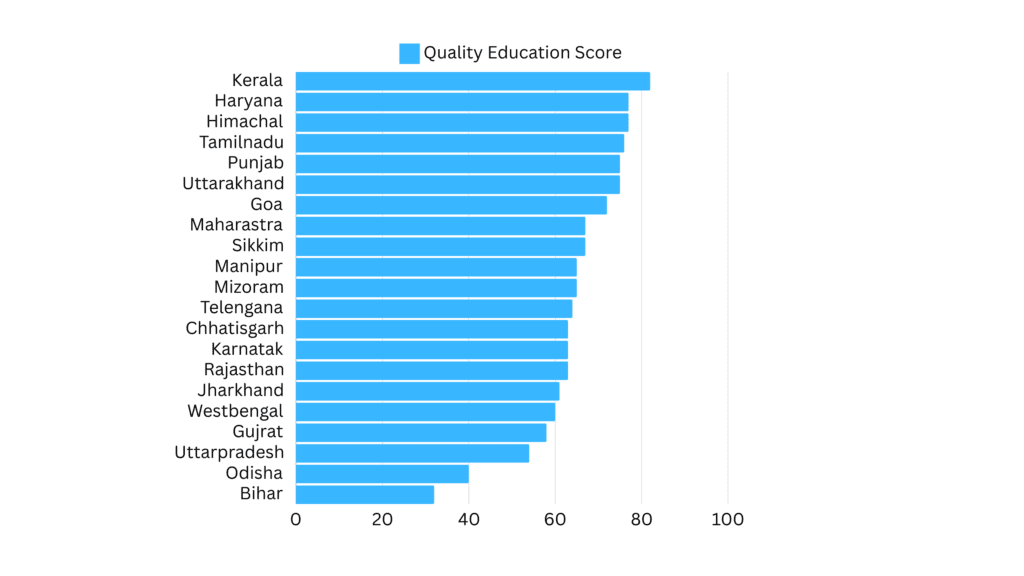Gujarat struggles with educational quality, ranking far below states like Kerala and Haryana according to the Niti Aayog’s SDG Report.
Gujarat Lags in Educational Quality Despite Broader Progress
Despite Gujarat’s strides in various sectors, the state faces significant challenges in providing quality education, as highlighted by the Sustainable Development Goals (SDG) Index Report for 2024, authored by Niti Aayog. The report, recently released to the public, places Gujarat far behind states like Kerala, Haryana, and Himachal Pradesh in terms of educational quality and outcomes.

Kerala tops the SDG index with a score of 82, followed by Haryana and Himachal Pradesh, each scoring 77. In stark contrast, Gujarat’s score stands at just 58, placing it below even West Bengal, Jharkhand, and Rajasthan. This disparity raises questions about the effectiveness of Gujarat’s educational initiatives.

Enrollment and Dropout Challenges Persist
For over a decade, the Gujarat government has implemented the ‘Shala Praveshotsav’ program, aimed at increasing school enrollment across the state. Senior IAS, IPS, and IFS officers actively participate in this initiative, visiting villages to ensure no child is left out. However, despite these efforts, the net enrollment rate for classes I to VIII in Gujarat is 89%, trailing behind states like Arunachal Pradesh and Assam, which boast a 100% enrollment rate, and Andhra Pradesh with 96.9%.

Even more concerning is the high dropout rate in Gujarat’s secondary schools. Although the state has made progress compared to the 1980s and 1990s, the current dropout rate of 17.9% remains alarmingly high, especially when compared to Kerala’s 5.5% and Haryana’s 5.9%. Additionally, Gujarat’s enrollment ratio in higher secondary classes is only 48.2%, significantly lower than Kerala’s 85% and Tamil Nadu’s 81%.
Infrastructure Improvements Not Matched by Educational Outcomes
While Gujarat has made notable improvements in infrastructure—99.93% of schools have electricity and drinking water facilities, and 98% are equipped with computers—these advancements have not translated into better educational outcomes. Furthermore, the quality of education is further compromised by a shortage of teachers. In February 2024, the Gujarat government informed the legislative assembly that 1,606 government-run primary schools were operating with just one teacher for all students from classes 1 to 8, nearly doubling from 700 such schools in 2022.
Gujarat has made notable improvements in infrastructure—99.93% of schools have electricity and drinking water facilities, and 98% are equipped with computers—these advancements have not translated into better educational outcomes.
The SDG report serves as a stark reminder that despite infrastructural improvements, Gujarat must urgently address its educational shortcomings to ensure that the state’s students receive the quality education they deserve.








